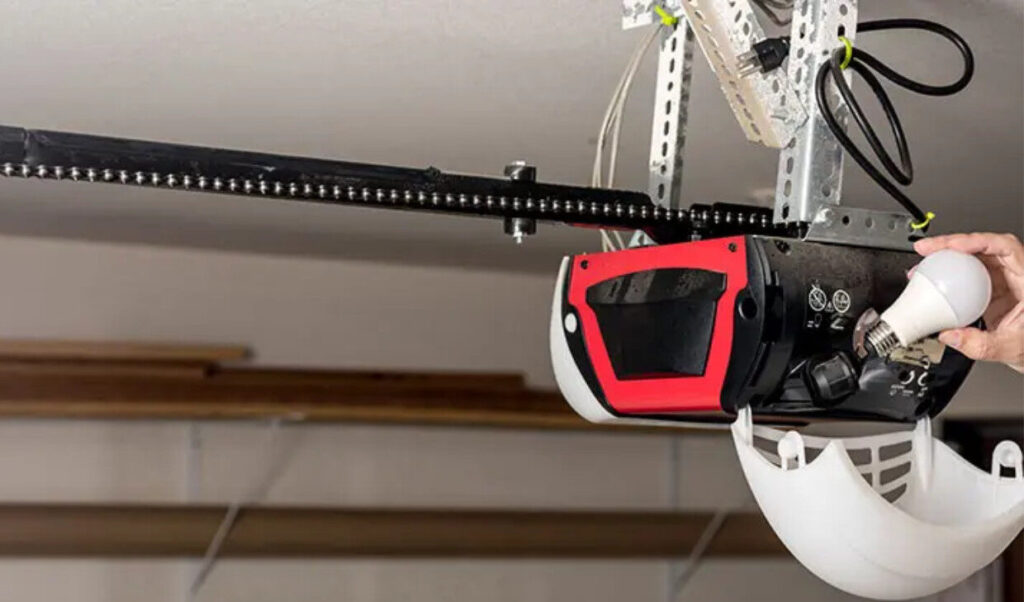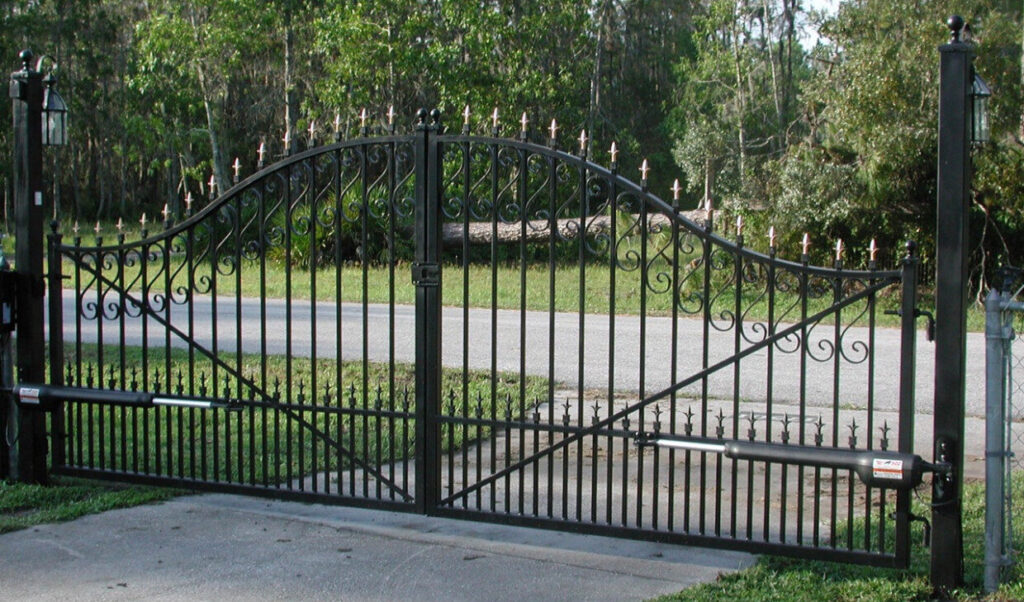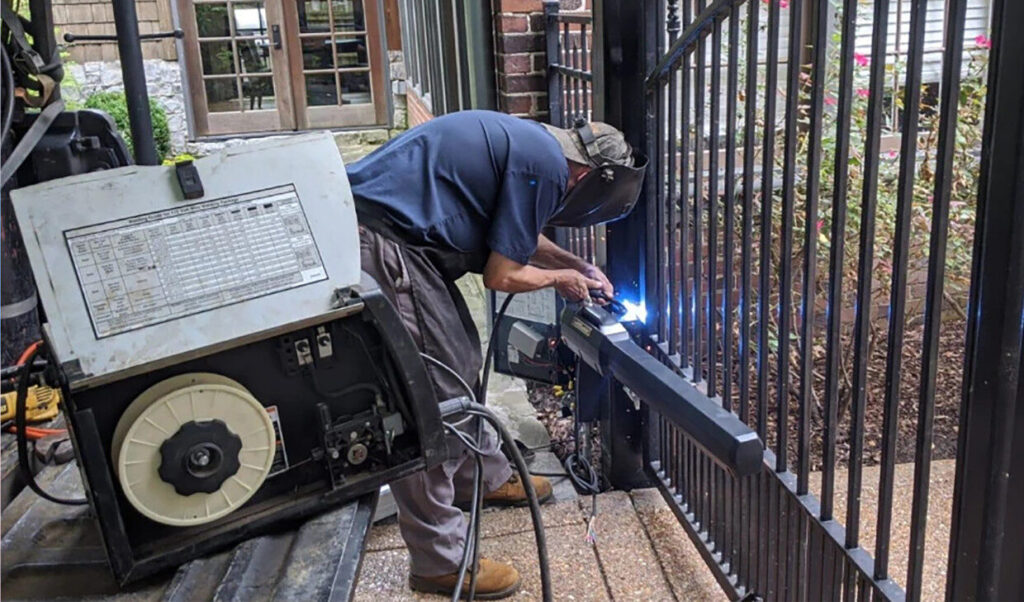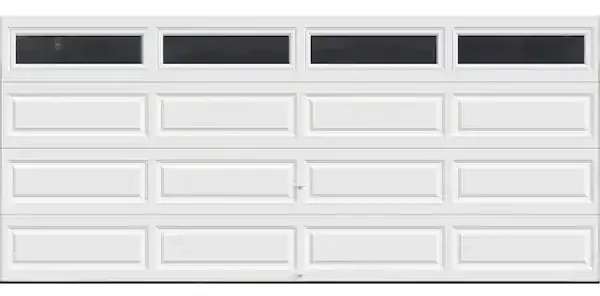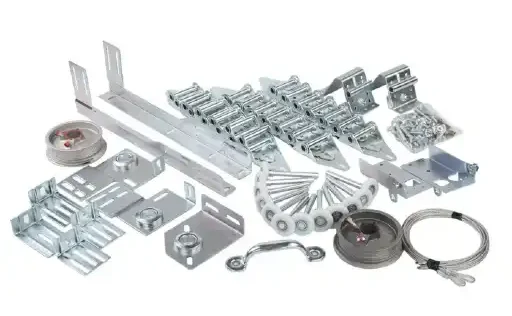Understanding the Basics: What Do Springs Do?

Garage door springs are the unsung heroes of your garage door system, but many homeowners don’t realize just how important they are. Without them, your garage door would feel like it weighs a ton—and frankly, it would. Springs do the heavy lifting, literally! In this post, we’ll dive into what garage door springs do, why they matter, and how they make opening and closing your garage door feel like a breeze. Don’t worry, we’ll keep it light, so you won’t need an engineering degree to follow along!
1. Garage Door Springs: Your Door’s Muscle Power
Let’s start with the basics: what exactly do garage door springs do? Well, they’re the muscle behind the operation. Garage doors can weigh hundreds of pounds, and without the springs, you’d need to be a bodybuilder to lift one! Springs work by counterbalancing the door’s weight, making it easy to raise and lower, whether you’re using a remote or lifting it manually.
Think of the springs as a set of powerful arms that take on most of the door’s weight for you. When the door is closed, the springs are under tension, storing energy. As you open the door, the springs release that energy, making the door feel much lighter than it really is. And when you close the door, the springs regain that tension, ready to help out again when the door is opened. Pretty cool, right?
2. The Two Types of Garage Door Springs: Torsion and Extension
Now, let’s talk about the two main types of springs: torsion springs and extension springs. While they both do the same job of helping your garage door move smoothly, they work in slightly different ways.
Torsion Springs are mounted horizontally above the garage door opening. When the door closes, the torsion springs twist, storing energy. When you open the door, they unwind, releasing that stored energy to lift the door. Torsion springs are generally more durable and offer smoother operation, which is why they’re often found in newer or heavier garage doors.
Extension Springs, on the other hand, are mounted on either side of the garage door tracks. These springs stretch and contract as the door moves. When the door closes, the extension springs stretch out and build up tension, which is then used to help lift the door when it opens. Extension springs are typically found in older or lighter garage door setups.
So, whether you’ve got torsion or extension springs, they’re both doing the same important job of lifting that heavy door and making it easy for you to get in and out of your garage without breaking a sweat.
3. Why Springs Are Critical for Safety
Garage door springs aren’t just there to make your life easier—they’re also a vital safety feature. A garage door without functioning springs is not only difficult to operate, but it’s also a safety hazard. Imagine a heavy door slamming shut unexpectedly. That’s where the springs come in to save the day!
The springs control the speed at which the door opens and closes, preventing it from free-falling and potentially causing damage or injury. That’s why it’s important to make sure your springs are in good working condition. Regularly checking the balance of your garage door can help you spot potential issues with the springs before they become a big (and dangerous) problem.
If you ever notice your door closing too quickly or feel like it’s harder to lift than usual, it might be a sign that your springs are wearing out. In that case, it’s best to call a professional to inspect or replace them. Handling springs can be dangerous, so leave it to the experts to keep everything working safely.
4. How to Extend the Life of Your Garage Door Springs
While garage door springs are built to last, they don’t last forever. The good news is, there are a few things you can do to help extend the life of your springs and keep your garage door functioning smoothly.
First, make sure you’re keeping your springs lubricated. A little lubrication goes a long way in preventing wear and tear. Simply apply a silicone-based lubricant to the springs every few months to keep them moving smoothly.
Second, be gentle with your garage door. Slamming it shut or forcing it open when it’s stuck can put extra strain on the springs. Instead, operate the door gently and make sure the tracks and rollers are kept clean and free from obstructions.
Finally, if you notice any unusual noises or resistance when opening or closing the door, get it checked out sooner rather than later. Springs can wear out or snap over time, especially if they’re not maintained properly. Replacing them at the first sign of trouble can prevent more serious (and expensive) issues down the line.
5. When to Call in the Pros
As handy as you might be, garage door springs aren’t a DIY project. These springs are under a lot of tension, and mishandling them can lead to serious injury. If you suspect your springs need repair or replacement, the best thing you can do is call a professional garage door technician. They have the right tools and experience to handle the job safely and efficiently.
A good rule of thumb is to have your garage door system inspected annually. This way, a professional can spot any potential issues with the springs, cables, or other components and address them before they turn into bigger problems. Regular maintenance is key to keeping your door functioning smoothly and safely.
Torsion Springs: When Are They the Best Choice?
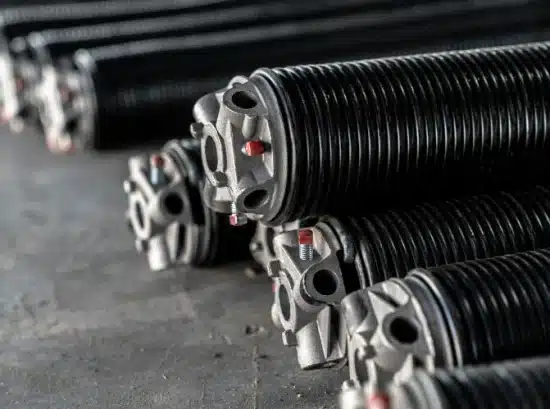
When it comes to garage door springs, torsion springs are often considered the heavy-duty, high-performance option. But when exactly are they the best choice for your garage door? In this post, we’ll explore what torsion springs are, how they work, and why they might be the right fit for your home. Don’t worry, we’ll break it down in simple, easy-to-understand terms so you can feel confident about your garage door spring decision.
1. What Are Torsion Springs, and How Do They Work?
Let’s start with the basics: what exactly are torsion springs? Torsion springs are mounted horizontally above your garage door opening, usually on a metal shaft. They’re wound tightly, storing energy as the garage door closes. When you open the door, the springs unwind, releasing that energy to lift the door with ease. The key difference between torsion springs and other types, like extension springs, is that torsion springs twist to store energy rather than stretching.
Because of their unique design, torsion springs distribute the weight of your garage door more evenly. This results in smoother, quieter operation compared to other spring types. If you’re tired of your garage door creaking and groaning as it opens, torsion springs could be the upgrade you’ve been looking for. And who doesn’t love a garage door that opens like a whisper?
2. Durability: The Strong, Silent Type
One of the biggest reasons homeowners choose torsion springs is their durability. These springs are built to last, and that’s not just a marketing claim. Torsion springs tend to have a longer lifespan than their extension spring counterparts. On average, a standard torsion spring can last anywhere from 15,000 to 20,000 cycles. In comparison, extension springs usually last around 10,000 cycles.
A “cycle” is one full opening and closing of the garage door. So, if you use your garage door a couple of times a day, a torsion spring could last you well over a decade. This durability makes torsion springs a great choice if you’re looking for a low-maintenance, long-lasting solution. Plus, fewer replacements mean less hassle and more money saved over time. Who doesn’t love that?
3. Smoother Operation and Increased Safety
If you’ve ever seen a garage door slam shut unexpectedly, you know how dangerous it can be. Torsion springs offer an extra level of safety because they allow for smoother operation and better control over the door’s movement. Unlike extension springs, which can sometimes cause jerky or uneven motion, torsion springs help keep your garage door moving smoothly up and down.
This smoother operation also reduces wear and tear on other garage door components, like the tracks, rollers, and opener. By reducing strain on these parts, torsion springs help your entire garage door system last longer and operate more safely. And since torsion springs are less likely to snap than extension springs, you can rest easy knowing your garage door is a little safer to operate.
Another key safety feature of torsion springs is that they are located above the door, mounted on a metal shaft. This setup minimizes the risk of springs breaking and causing damage or injury. Extension springs, on the other hand, stretch along the sides of the door and can cause more damage if they break. So if safety is a top priority for you, torsion springs are definitely worth considering.
4. Are Torsion Springs Right for Your Garage Door?
Now that we’ve covered how torsion springs work and their key benefits, you might be wondering if they’re the right choice for your garage door. The good news is that torsion springs are suitable for most residential garage doors, especially if your door is heavier or you use it frequently.
If you have a single-car garage door that’s lightweight and only gets occasional use, you might be able to get away with extension springs. However, if your door is larger, heavier, or sees a lot of daily traffic, torsion springs are likely the better option. The added durability and smoother operation make them ideal for high-traffic garage doors, like those that serve as the main entrance to your home.
Additionally, if you live in an area with extreme weather conditions—like heavy snow or intense heat—torsion springs can handle the extra strain that these elements might put on your garage door. They’re designed to withstand more wear and tear, making them a solid choice for homeowners who want a long-lasting and reliable solution.
5. Torsion Springs: A Worthy Investment
Let’s talk cost. While torsion springs can be more expensive upfront compared to extension springs, they’re usually worth the investment. Their longer lifespan and smoother operation mean fewer repairs and replacements down the line. Plus, the extra safety features give you peace of mind, especially if you have kids or pets running around.
It’s also worth noting that torsion springs require professional installation. While it might be tempting to try and install them yourself, garage door springs are under a lot of tension, and improper installation can lead to serious injury. Hiring a professional to install your torsion springs ensures that the job is done safely and correctly.
Extension Springs: Cost and Performance Benefits

When it comes to garage door springs, extension springs offer a practical, budget-friendly option without sacrificing performance. If you’ve been wondering whether extension springs are a good fit for your garage door, you’re in the right place. Let’s take a closer look at the cost and performance benefits of extension springs, why they’re a popular choice for homeowners, and when they’re the best option for your garage.
1. Affordable and Effective: A Cost-Conscious Choice
Let’s face it—most of us like to save money where we can. When it comes to garage door springs, extension springs are the more affordable option compared to their heavy-duty cousins, torsion springs. If you’re working within a tight budget but still need reliable performance, extension springs are a smart choice.
Extension springs stretch along the sides of your garage door tracks, expanding and contracting as the door opens and closes. This simple yet effective design keeps costs down without compromising the functionality of your garage door. While they may not last as long as torsion springs, they still get the job done, especially for lighter garage doors and moderate use.
Whether you’re replacing old springs or installing new ones, extension springs tend to be the more wallet-friendly option, making them perfect for homeowners looking to maintain performance without breaking the bank. And hey, who doesn’t love saving a little extra cash?
2. Quick and Easy Installation
One of the benefits of extension springs is their straightforward installation. They don’t require the complex setup of torsion springs, which means the installation process is usually quicker and more affordable. In many cases, if you’re handy around the house, you could even install them yourself—but be careful! Garage door springs are under tension and should be handled with care to avoid injury.
That said, we always recommend calling in a professional for spring installations. It’s faster, safer, and they’ll ensure everything is working correctly from the start. The simplicity of extension springs means a technician can get the job done in no time, and you’ll be back to using your garage door in a snap.
This ease of installation also makes it simpler to replace extension springs if they ever wear out. With torsion springs, you might be looking at a longer process and higher labor costs. But with extension springs, getting back up and running is usually quick and cost-efficient.
3. Strong Performance for Lightweight Doors
Extension springs might be budget-friendly, but that doesn’t mean they’re weak. These springs offer solid performance for lightweight or single-car garage doors. They can easily handle doors that are not too heavy or used excessively. So, if you’re not raising and lowering a heavy door multiple times a day, extension springs are more than capable of providing reliable service.
For homes with standard, single-car garage doors or those that don’t rely on their garage door as a primary entrance, extension springs are a great fit. They provide the right balance of affordability and performance for typical day-to-day use.
One thing to keep in mind is that extension springs can be noisier than torsion springs, especially as they get older. However, regular maintenance and lubrication can help keep the noise to a minimum. It’s a small trade-off for their affordability and ease of use, but it’s something to consider if you prefer a super-quiet garage door operation.
4. Flexibility for Customization
If you’re concerned about whether extension springs will fit your garage door setup, don’t worry. These springs come in a variety of sizes and strengths to accommodate different door weights and uses. Whether your garage door is small and light or slightly heavier, there’s an extension spring that can handle the job.
For homeowners who like a little customization, extension springs can be adjusted to suit the weight of your garage door, ensuring it opens and closes smoothly. When installed and calibrated correctly, extension springs can perform just as well as more expensive options, offering a nice middle ground between affordability and reliability.
Also, if you’re thinking about making upgrades down the road, replacing extension springs is relatively inexpensive and hassle-free. This flexibility makes them a practical choice for homeowners who want options without committing to a high upfront cost.
5. Balancing Cost and Lifespan
One trade-off with extension springs is that they generally have a shorter lifespan compared to torsion springs. On average, extension springs are designed to last about 10,000 cycles (one cycle being one full open and close of your garage door). If you use your garage door several times a day, those cycles can add up quickly. However, if your garage door sees lighter use, extension springs can last for many years before needing replacement.
When thinking about the lifespan, it’s all about balance. While you might need to replace extension springs more frequently than torsion springs, the lower cost makes replacement much more affordable. If you’re using your garage door moderately, this balance of cost and lifespan makes extension springs a solid option that won’t drain your wallet when it comes time to replace them.
Safety Tips for Handling Garage Door Springs

Handling garage door springs can be a bit intimidating, and for good reason. These springs are under a lot of tension, and if they’re not handled properly, they can cause serious injury. But don’t worry! With the right safety precautions, you can avoid the common dangers and keep your garage door functioning smoothly. In this post, we’ll walk you through some key safety tips for handling garage door springs, so you can keep yourself and your home safe. Whether you’re a DIY enthusiast or just curious, these tips are good to know!
1. Know the Two Types of Springs
Before you dive into any garage door spring work, it’s important to understand what type of springs you’re dealing with. There are two main types: torsion springs and extension springs. Torsion springs are mounted horizontally above the garage door, while extension springs run along the sides of the door tracks.
Knowing the difference is crucial because they operate differently and have different safety risks. Torsion springs hold a lot more tension and are generally trickier to work with, making them more dangerous for DIY repairs. Extension springs, while still risky, are a bit easier to manage. Regardless of which type you have, you should always approach spring maintenance with caution.
If you’re unsure what type of springs your garage door uses, it’s worth taking a few minutes to check. This will help you know what safety precautions to take before any hands-on work begins.
2. Turn Off the Power and Lock the Door
First things first, before handling your garage door springs, turn off the power to your garage door opener. You definitely don’t want the door to suddenly move while you’re working on it. This is an easy step that a lot of people overlook, but it can prevent some major accidents. Simply unplug the garage door opener or turn off the power at the breaker box to ensure that the motor won’t activate during your repairs.
Next, you’ll want to lock the garage door in place. This ensures that it won’t move while you’re working on the springs. Most garage doors have a manual lock that you can engage to hold the door in a closed position. If your door doesn’t have a lock, you can clamp the door’s tracks with a pair of locking pliers to keep it from moving.
Locking the door and turning off the power should always be your first steps to keep things safe. It’s a quick and easy way to prevent unexpected movement while you’re handling the springs.
3. Wear Protective Gear
Safety gear might not sound glamorous, but it’s absolutely essential when working with garage door springs. You’re dealing with high-tension components, so it’s important to protect yourself in case something goes wrong. Start by wearing a sturdy pair of safety gloves to protect your hands from cuts, scrapes, and potential snapbacks from the springs.
It’s also a good idea to wear safety goggles. In the event that a spring breaks or something goes flying, you want to protect your eyes from any debris. Springs can suddenly release tension if they’re not handled properly, and trust us, you don’t want to be in the line of fire!
Lastly, if you’re working in a cramped or cluttered garage, make sure your work area is clear to avoid tripping over tools or objects. Creating a safe, organized workspace will help you stay focused on the task at hand and reduce the risk of accidents.
4. Avoid DIY Repairs on Torsion Springs
Here’s the truth: torsion springs are not a DIY project. These springs are under an enormous amount of tension, and if you don’t have the proper tools or training, handling them can be extremely dangerous. One wrong move and you could end up with a serious injury or cause significant damage to your garage door system.
If your garage door uses torsion springs and they need repair or replacement, your best bet is to call a professional. Garage door technicians have the right tools and experience to safely handle torsion springs. They know how to release the tension properly, replace the springs, and get your door working again without any risk to you or your home.
Extension springs, while still tricky, are a bit more manageable for a confident DIYer. But if you’re not sure, it’s always better to be safe than sorry. When in doubt, leave the big jobs to the pros!
5. Regular Maintenance to Prevent Problems
The best way to handle garage door springs safely is to avoid big problems in the first place. And the way to do that is with regular maintenance. By keeping your springs in good shape, you’ll reduce the risk of them snapping or wearing out unexpectedly.
At least twice a year, check your springs for signs of wear and tear. Look for rust, cracks, or gaps in the coils. A little lubrication can go a long way in extending the life of your springs, so make sure to apply a silicone-based lubricant to the springs every few months. This will help them move smoothly and prevent rust from building up.
If you notice anything out of the ordinary, like excessive noise or difficulty opening and closing the door, don’t wait! Address the issue right away to avoid bigger, more dangerous problems down the line. Staying on top of maintenance will keep your springs—and your garage door—working safely and efficiently for years to come.
Conclusion: Why Your Garage Door Springs Matter
Garage door springs are the key to your garage door’s smooth, safe operation, as they handle the heavy lifting and control its movement. Understanding the types of springs, how they work, and how to maintain them can prevent costly repairs, extend their lifespan, and avoid potential safety hazards. Whether you’re dealing with torsion or extension springs, knowing their importance helps you make informed decisions about repairs, maintenance, and when to call a professional. In short, garage door springs are essential to keeping your garage door running reliably and safely for years to come.




